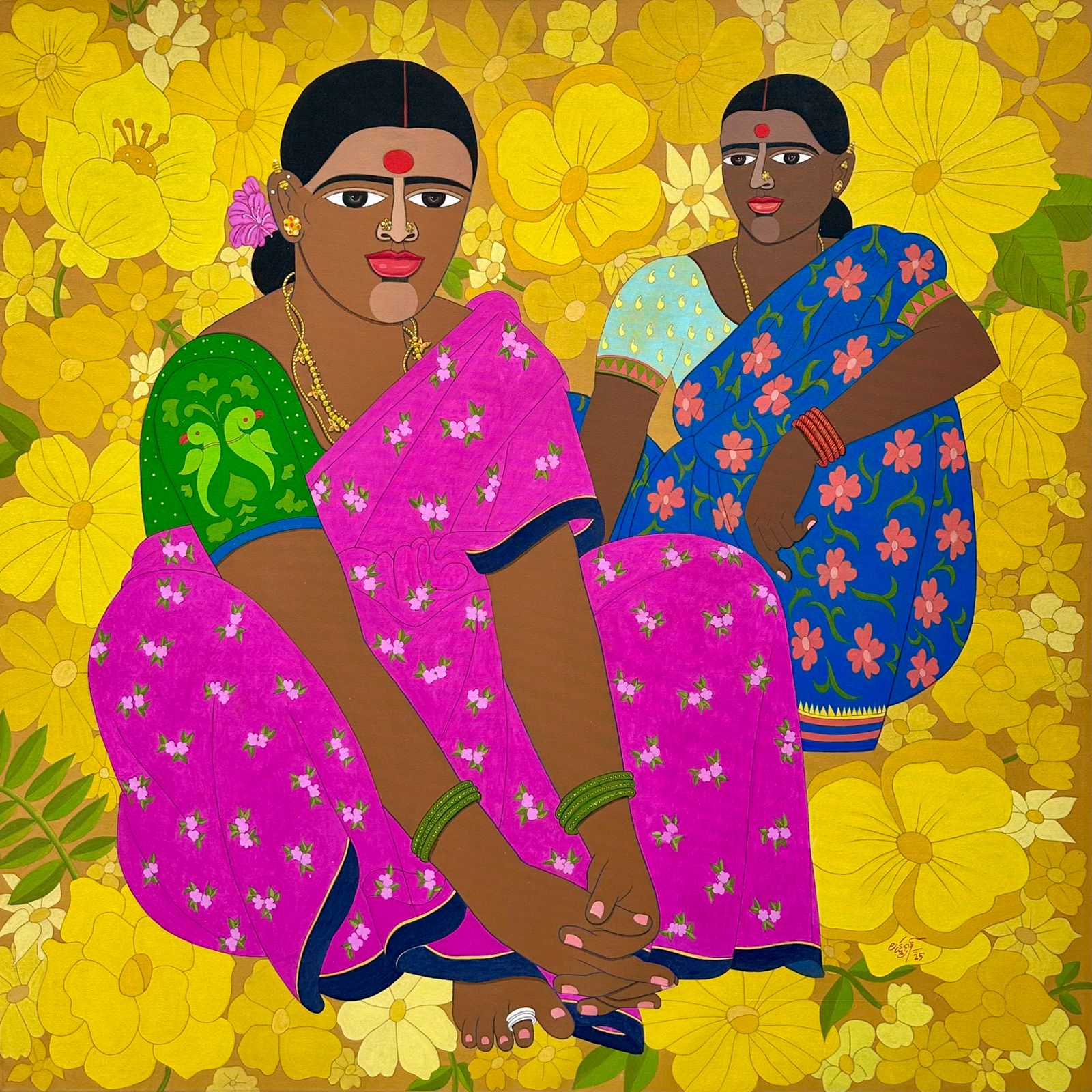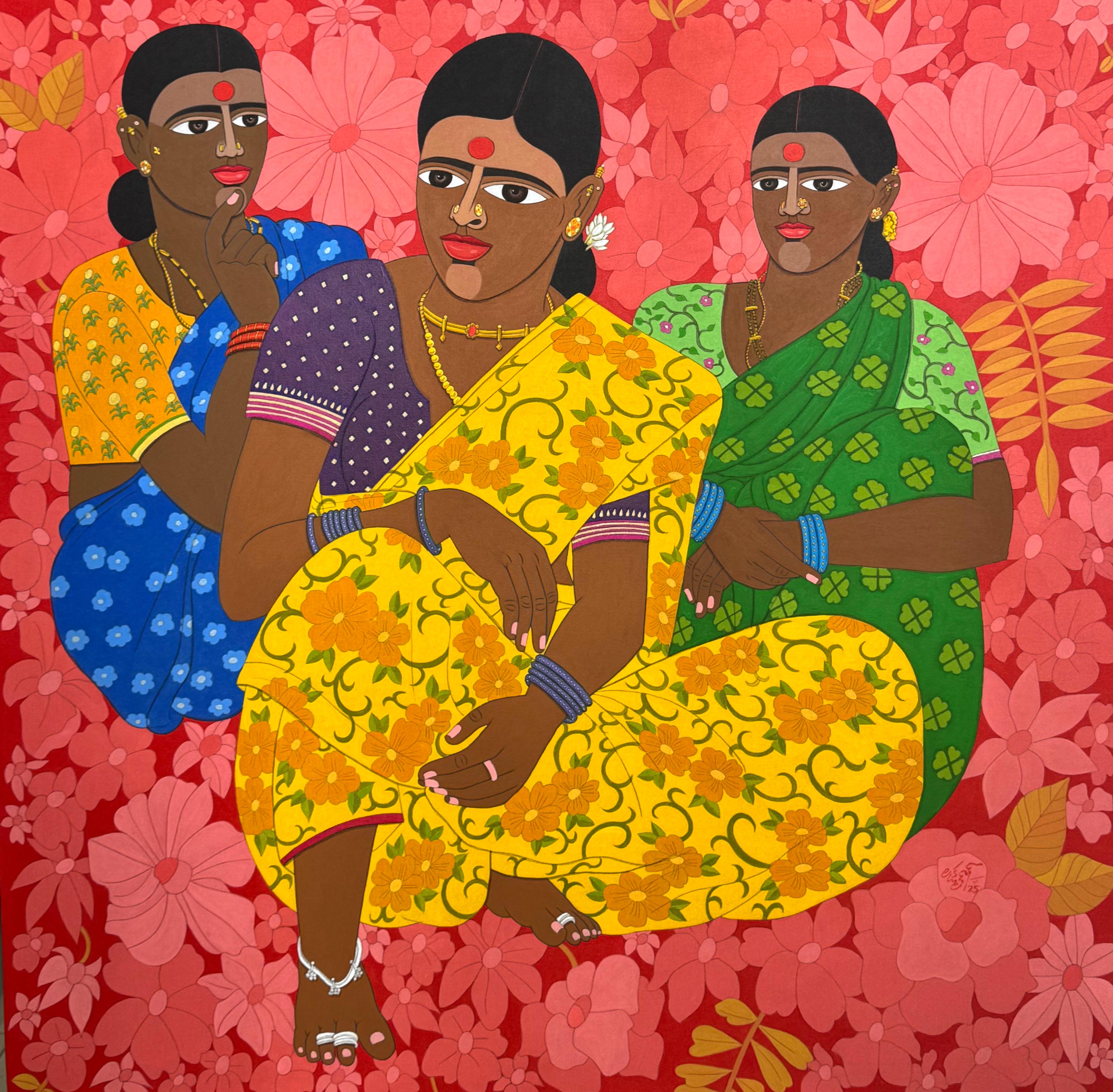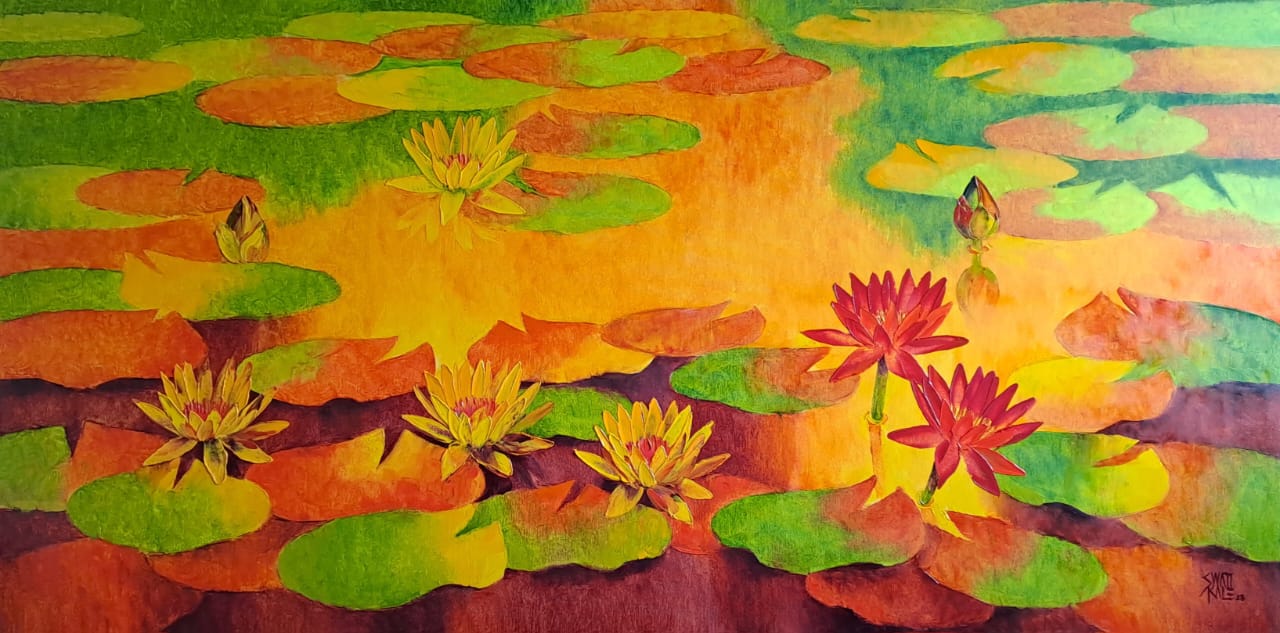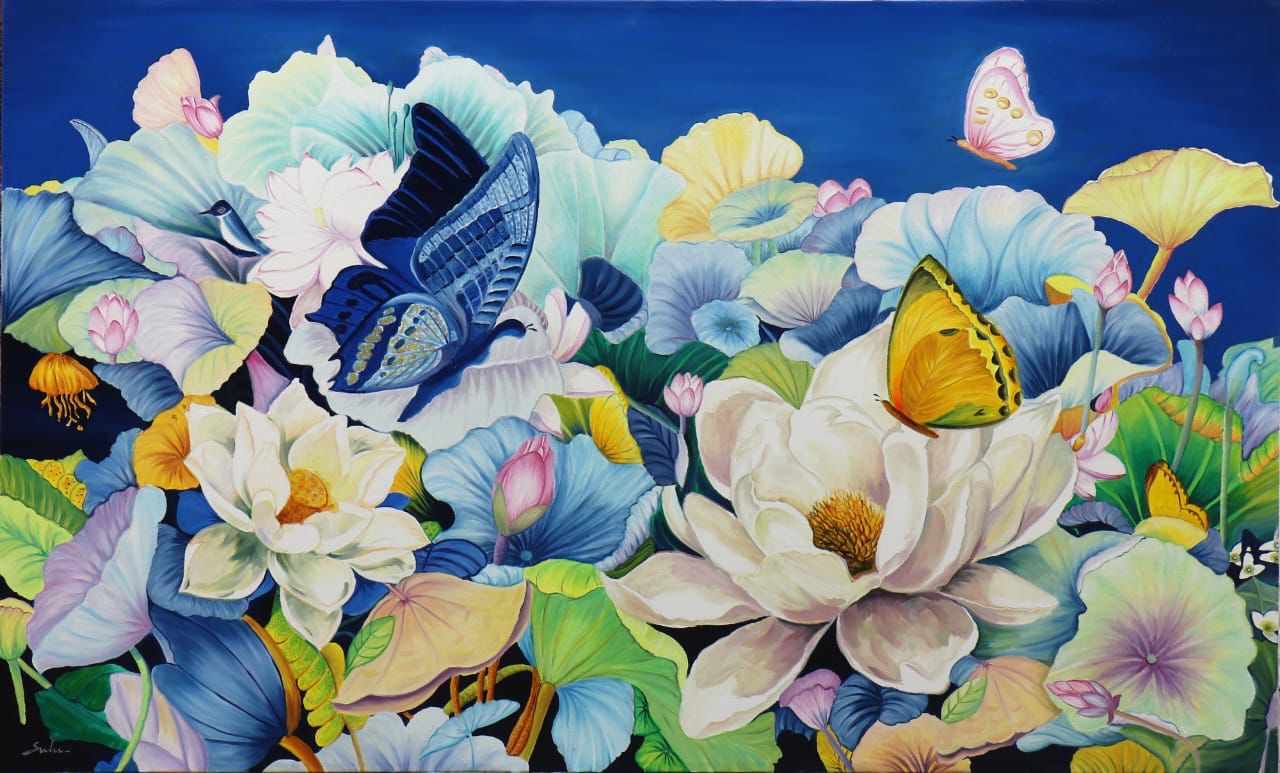Beautiful Oil Paintings of Flowers
Oil paint has revolutionized the portrayal of flowers, offering a diverse range of styles and representations that capture their essence with unparalleled richness and depth. The medium’s capacity for blending and layering enables artists to explore various approaches, from realistic to abstract interpretations.
Vincent van Gogh’s "Sunflowers" series demonstrates oil paint's power in creating bold, expressive works. His dynamic brushstrokes and vibrant yellow hues convey both the physical texture and emotional resonance of sunflowers, transforming them into symbols of vitality and joy. In contrast, Claude Monet’s "Water Lilies" series showcases oil paint’s ability to create serene, impressionistic depictions. Monet’s fluid brushwork and nuanced color palette evoke the tranquil beauty of water lilies, capturing the play of light and reflection on water with a soft, ethereal quality.
The medium's versatility extends to other artists as well. Georgia O’Keeffe’s close-up flower paintings, such as "Black Iris" and "Red Canna," utilize oil paint to explore the sensuality and abstract forms of flowers. Her use of vibrant colors and smooth textures highlights the intricate details and shapes, transforming flowers into striking, almost abstract forms. Meanwhile, Gustav Klimt’s floral compositions, such as those in his "Flower Garden" series, employ oil paint to blend intricate patterns with lush, decorative elements, creating richly textured and ornamental works that elevate the floral subject to a level of opulent abstraction.
Through these diverse styles and techniques, oil paint has proven to be an essential medium in flower painting, allowing artists to experiment with texture, color, and form while conveying the complex beauty of their subjects.
If you are specifically looking for oil paintings of flowers, explore the works of
Swati Kale and
Sulakshana Dharmadhikari on Artflute. Swati Kale’s works have a sombre and classical painting style while Sulakshana’s works are more vibrant, colorful, and contemporary in technique.
Flower Paintings by Famous Artists
Flower paintings have captivated artists for centuries, serving as a rich source of inspiration across different cultures and artistic movements. Renowned artists have turned to the natural beauty and symbolic depth of flowers to create some of the most iconic and beloved works in the history of art.
Vincent van Gogh: The Sunflowers of Passion and Pain: Vincent van Gogh’s "Sunflowers" features two key series: the first from 1887 in Paris with sunflowers on the ground, and the second from 1888 in Arles, showing sunflowers in a vase. Van Gogh began the Arles series in late summer 1888 to decorate the guestroom for his friend Paul Gauguin, capturing the flowers in all stages of life—from full bloom to withering. These paintings were innovative for their vibrant use of yellow, enabled by new pigments. Van Gogh admired them for their evolving richness and dedicated them to Gauguin, who he hoped would see them as his unique contribution to art.
Georgia O'Keeffe: The Sensuality of Flowers: Georgia O'Keeffe, often referred to as the "Mother of American Modernism," revolutionized the way flowers were depicted in art. Her large-scale, close-up paintings of flowers, such as "Black Iris" and "Jimson Weed," invite viewers to see the natural world through a new lens. O'Keeffe magnified her floral subjects to emphasize their forms, textures, and intricate details, often imbuing them with a sensual, almost erotic quality. Her work challenges traditional perceptions of femininity and nature, using flowers as a means to explore complex themes of sexuality, mortality, and the sublime. O'Keeffe’s flower paintings are celebrated not only for their aesthetic beauty but also for their bold exploration of the female experience.
Claude Monet: The Lyrical Beauty of Water Lilies: Claude Monet, the father of Impressionism, is perhaps best known for his series of "Water Lilies," which he painted in the garden at his home in Giverny. These paintings capture the changing light and reflections on the water, creating a dreamlike, almost meditative atmosphere. Monet’s water lilies are a testament to his fascination with nature and his desire to capture the fleeting moments of beauty that occur in everyday life. The soft, diffused light and the harmonious color palette evoke a sense of tranquility and contemplation. Monet’s flower paintings are not just a study of nature; they are an exploration of the artist’s inner world, his moods, and his perceptions of reality.
Jan van Huysum: The Baroque Splendor of Floral Still Life: In the 18th century, Dutch artist Jan van Huysum became renowned for his exquisite still-life paintings of flowers. His works, such as "Vase of Flowers," are masterpieces of Baroque art, known for their meticulous detail, vibrant colors, and lush compositions. Van Huysum’s flower paintings are a celebration of the natural world, capturing the beauty and diversity of flowers with extraordinary precision. His ability to depict the delicate textures of petals, the play of light on dewdrops, and the subtle gradations of color made his works highly sought after in his time and continues to inspire admiration today. Van Huysum’s paintings are a testament to the artist’s technical skill and his deep appreciation for the beauty of nature.
Henri Fantin-Latour: The Elegance of Simplicity: Henri Fantin-Latour, a French painter, is celebrated for his delicate and elegant still-life paintings, particularly his flower compositions. Unlike his contemporaries, who often sought to capture the fleeting effects of light and atmosphere, Fantin-Latour focused on the quiet beauty of flowers arranged in simple, harmonious bouquets. His works, such as "Roses in a Glass Vase" and "Peonies," are known for their soft, naturalistic style and the artist’s ability to convey the subtle charm of everyday subjects. Fantin-Latour’s flower paintings are imbued with a sense of intimacy and tranquility, making them timeless pieces that resonate with collectors and art lovers alike.
Pierre-Auguste Renoir: The Joyous Celebration of Blooms: Pierre-Auguste Renoir, another master of Impressionism, frequently turned to flowers as subjects in his paintings. His works, such as "Bouquet of Roses," are characterized by their vibrant colors, loose brushwork, and the joyful energy that radiates from the canvas. Renoir’s flower paintings capture the essence of the Impressionist movement—an emphasis on light, color, and the fleeting moments of beauty in everyday life. His ability to depict the lushness and vibrancy of flowers, coupled with his love for capturing the warmth of natural light, makes his works both visually stunning and emotionally uplifting.



















